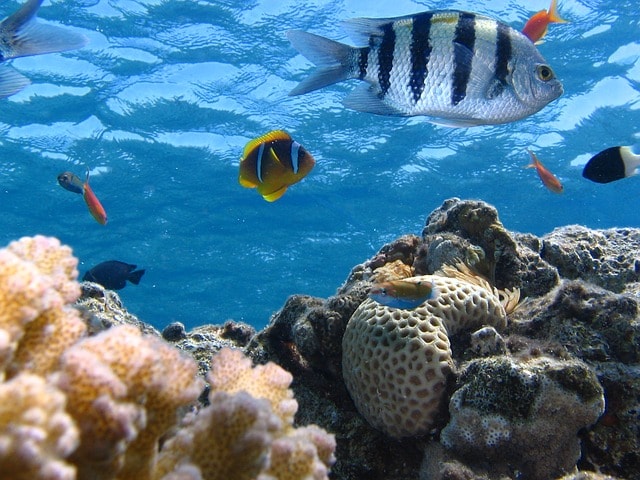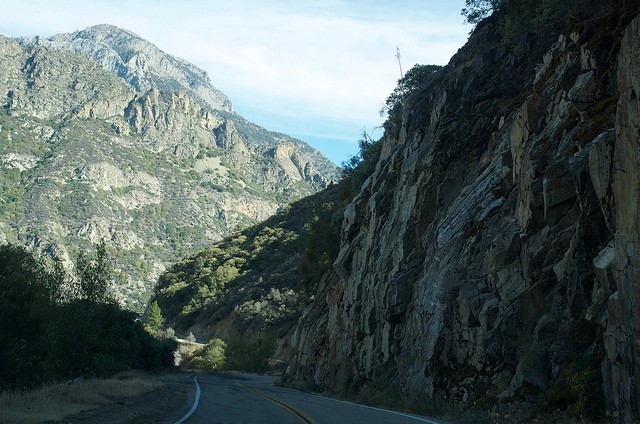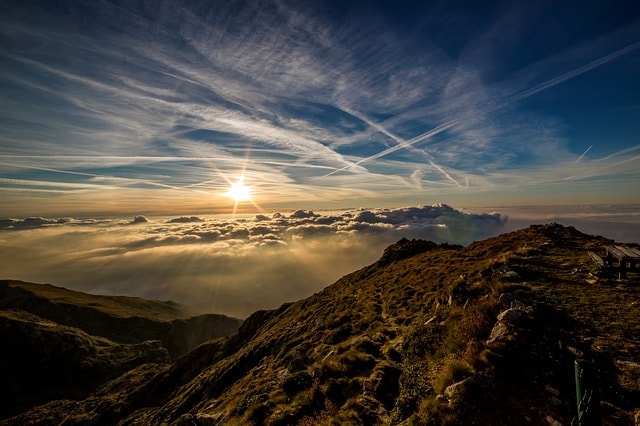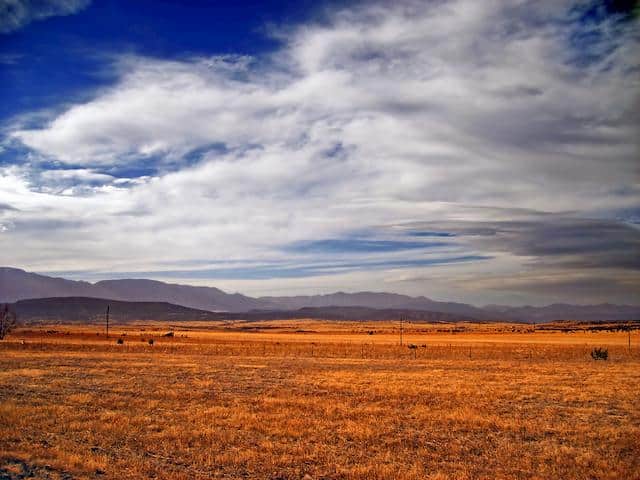What is Erosion? Process and Examples of Erosion? Difference Between Weathering and Erosion
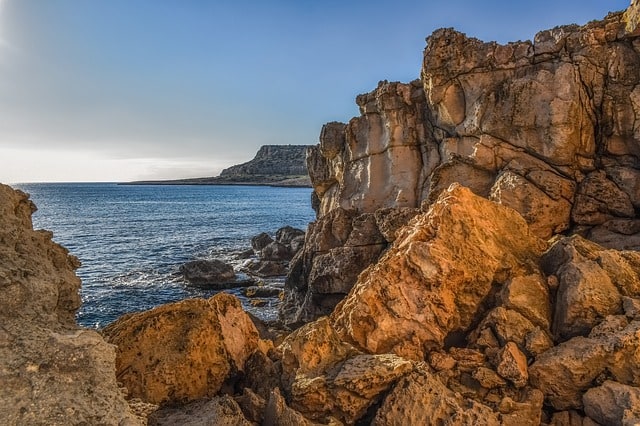
By the geological procedure, erosion happens. All the natural forces contribute to this happening. All the earthen materials shift itself from one place to another, and the forces like water and wind assist in it. Exogenous developments remove rocks and soil from the outer layer of the soil and then transfer it to another location and deposit them altogether.
What actually occurs in this procedure is that the process of erosion breaks all the things such as our land and surrounding surfaces that we are living in. Denudation comes due to the course of this kind of breaking down of the land, followed by the weathering. The gravity of the earth also contributes to the erosion caused by wind, water, ice and of course, gravity.
Erode Soil and Rocks of the Earth
Erosion is not just a geological process but is also a part of the natural phenomenon that is called the “rock cycle.” However, there is no effect of such kind of transformation of the earth in its central part or core.
Geologists say that to make the erosion fruitful, the earth needs lots of energy that what the sun supplies. Through this energy, the ice and water move in the cycle of water, and it also creates wind by the passing of air.
Erosion is very problematic, and human life faces various problems for such erosions. It creates a major problem for farmers. When the land erodes, it removes the topsoil, keeping only the rock soil behind. Erosion also leads to problems for human beings as soil supports our buildings.
Types of Erosion with Examples
There are several reasons which can cause erosion. Of them, ice and wind are the vital elements of nature that trigger erosion.
By Water
Water, when flowing through downhill, can easily take away soil along with other rock particles.
The natural change of temperature forces the rock pieces to get out of the earth’s surface. Besides, the acidic properties found in the rainwater also break up rocks that contain calcium carbonate, which is just the process that we call weathering.
Erosion by the water takes place when water makes the force to move the soil or rock downhill. Not only the rocks, but we also know that the water force or waves carry with them tiny particles of the earth. As a matter of fact, the water wave can wash up the upper layer of soil or the rock and then transport them into the lake or ocean.
The volume of earth substances which the water carried depends totally upon the movement of water or upon the forces of water that move very fast. If it is a fast-flowing watercourse, then it can hold very large pieces of rocks, whereas a slow-moving river can carry very little materials or substances. You may think of clay as a good example of this.
Example:
Canyons are good examples that result from erosion by water.
For the Tropical Water Bodies
All the great tropical rivers on the earth like the Brahmaputra, Paraná, Indus, Nile, Ganges, and Mississippi hold large amounts of deposits or the sediments into the core of the sea. Out of them, the Nile is the greatest river in the world that carries less sediment than all of the others because it runs throughout those regions where it is less fertile than the other big rivers.
By Wind
Another type of erosion called “Wind erosion” takes place when strong wind creates pressure on the materials of the earth, causing them to move. But we may think about it as one of the weakest erosions where very small pieces of soil rotate itself down the surface of the ground by the force of the wind. Here the wind is the carrier of the small parts of the earth or the various materials of the earth that get carried to distant locations.
Examples:
We can justify this process from the sediment of the desert of Sahara that the wind carries across the ocean of Atlantic.
Another famous illustration of erosion of wind took place in the Dust Bowl, which severely smashed the farming population.
By Gravity
Here the erosion we get is named Gravity Erosion, and it is the simplest type of erosion where Gravity of the earth merely pulls all of the loose materials of the earth to the downhill.
Example:
Landslides are striking examples of such erosion of gravity.
By Ice
Generally, in the form of glaciers, ice can erode the surface of the earth and produce different landforms. In frosty areas and on the top of the mountains, glaciers progress very slowly through the downhill and throughout the land. As they begin to move, they naturally transport all that comes in their path, which ranges from tiny sand particles to vast boulders.
Glaciers break up the rocks and during the process, rub away the topsoil.
Tectonics and Erosion
Geologists have been experimenting on the Tectonic consequence of erosion. We can see lots of rivers these days that are created during tectonic uplift.
Examples:
Tibetan and Himalaya’s Plateau
On the earth’s surface, all the ranges of the mountains are formed by the upward or the rising movement or the progress of the Earth. Sometimes numerous changes occur beneath the surface of the earth that insist the earth swell suddenly. The earth rises the entire system of the weather, including changing levels of the sea, the strength of the wind and its direction, falling of rain, and many more.
The landscape of the earth is the creation of two certain factors. Tectonics develop height or elevation by earth’s surface and exhilarating of the rock. Atmosphere or climate controls such erosion. Over time, the areas of upland get eroded.
The interface of these natural processes can modify the form, or obliterate features of the surface of the Earth.
Other Types of Erosion
Splash Erosion
This type of erosion occurs when a single drop of rain makes a small hole, removing soil. The rain is the primary cause of this type of erosion.
Gully Erosion
This is the most crucial erosion, and the rain again is the cause behind this, which melts snow and deposits it to those areas where excess water gathers to flow rapidly.
Rill Erosion
This pattern of erosion usually takes place when overflow develops into isolated streams.
Sheet Erosion
Soil erodes the untied particles in the erosion of the sheet. This erosion is also triggered by heavy rainfall.
Weathering
From the name itself, we can understand that weathering is the various actions of weather that causes the breaking down of rocks into further smaller pieces.
Difference Between Erosion and Weathering
To figure out the differences between erosion and weathering may be confusing for the readers if they fail to understand all the scientific facts that actually lead to these two natural phenomena. Erosion and Weathering both are natural and geological processes that work on the earth’s surface. Both of them cause to reshape the earth’s landscape.
While weathering is the process of breaking up of the big rocks into small particles, Erosion, in contrast, involves all the processes like the movement of wind, water, and ice to transfer the earth’s soil from one place to another. Weathering changes the size of the rocks and their structures too. And nature is the main force that instigates the process.
Weathering causes the breaking down of rocks into some smaller pieces, but here the rock particles do not get transported to a new location. But this is precisely what happens in case of erosion.
References:
https://simple.m.wikipedia.org/wiki/Erosion
https://www.publications.qld.gov.au/dataset/erosion-processes-sources-burdekin


